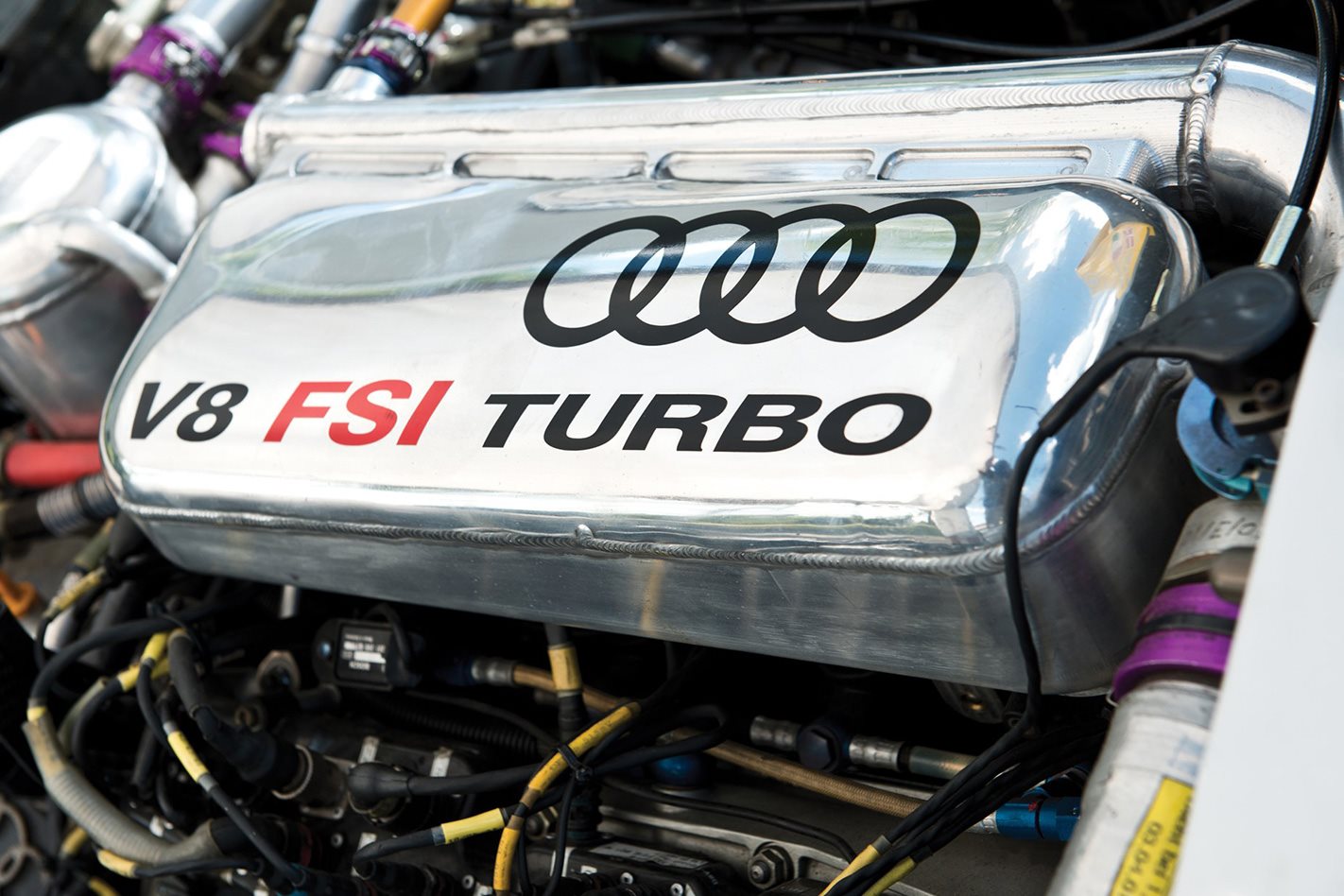The V8 engine has a long and storied history in motorsport, with the venerable bent-eight configuration arguably the most popular in racing history.
While there have been more powerful, more revolutionary, and more popular V8s in global racing history, none was more successful at the world’s toughest endurance race than Audi’s 3.6-litre twin-turbo V8.
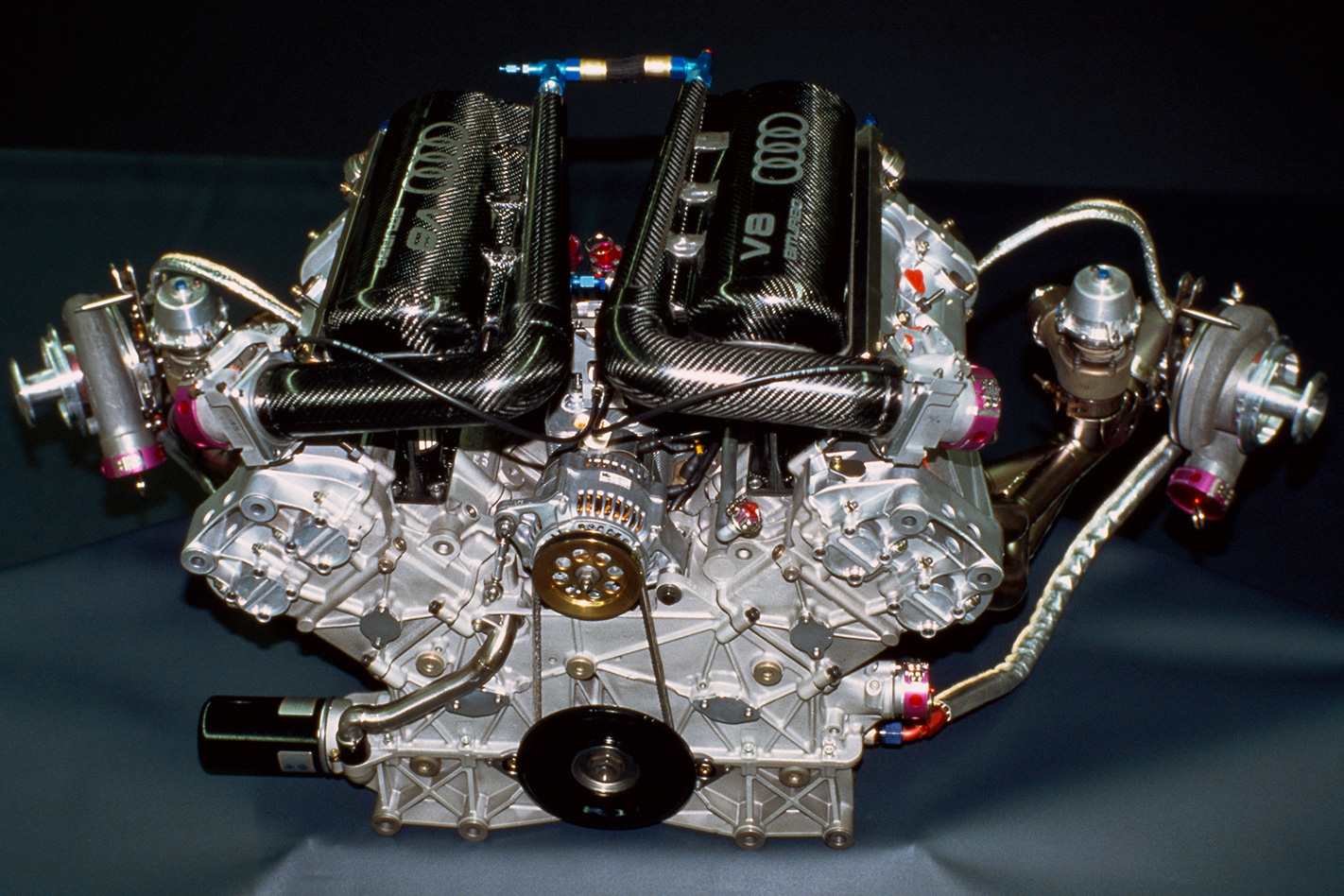
Despite its central role in dominating the 24 Hours of Le Mans at the start of the millennium, details on the 3.6-litre V8 are remarkably thin on the ground – it doesn’t even have a publicly known codename.
The story of the 3.6-litre started when Audi’s head of engine technology Ulrich Baretzky, along with head of motorsport Wolfgang Ullrich, were summoned for a meeting by Volkswagen Group CEO Franz Josef Paefgen at the newly-acquired ex-TOMS’s base in Norfolk, England.
The meeting would change sportscar racing – particularly Le Mans – for the next 15 years, as Paefgen charged Baretzky and Ullrich with leading Audi’s foray into endurance racing.
Up until this point, Baretzky had been developing production-based engines for touring car racing, making his new project the first purpose-designed motor from Audi since the Auto Union days of the 1930s. No pressure, then.
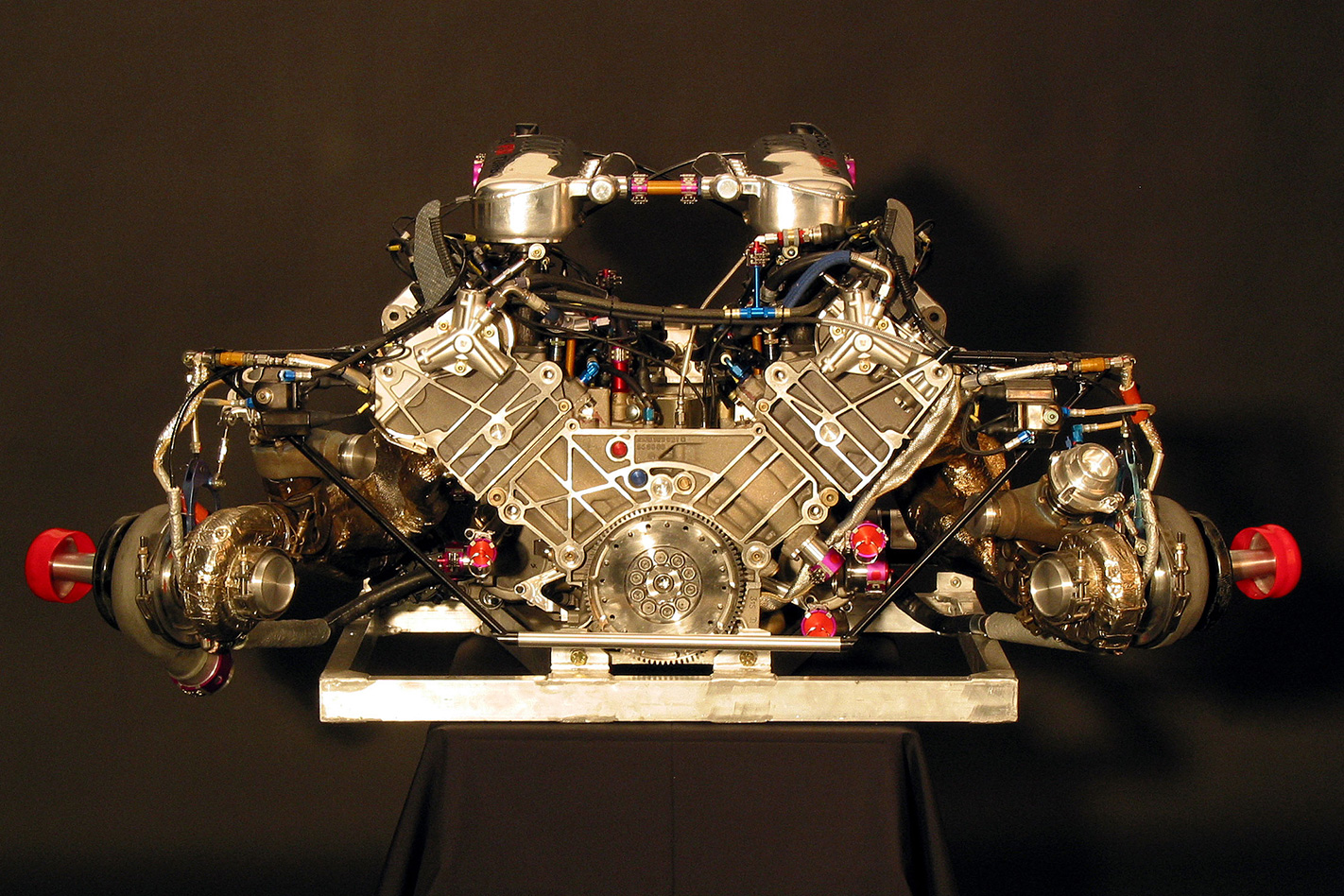
When Baretzky proposed a twin-turbo V8 engine layout to Paefgen, the VW CEO was initially opposed to the idea. Regardless, Baretzky pushed on with his plan, and the first iteration of the 3.6-litre engine was fitted to the R8R for the 1999 24 Hours of Le Mans.
After the lead R8R finished third in its Le Mans debut despite rising water temperatures in the closing laps, Paefgen was forced to humbly apologise to his engine guru, telling Baretzky “I apologise for having pushed you for the normally aspirated engine, you were absolutely right”.
Baretzky followed up the R8R with the R8, which would go on to be the most successful vehicle design to ever grace the La Sarthe circuit. On debut in 2000 it would finish 1-2-3, with the best non-Audi circulating 24 laps off the lead – roughly 88 minutes behind.
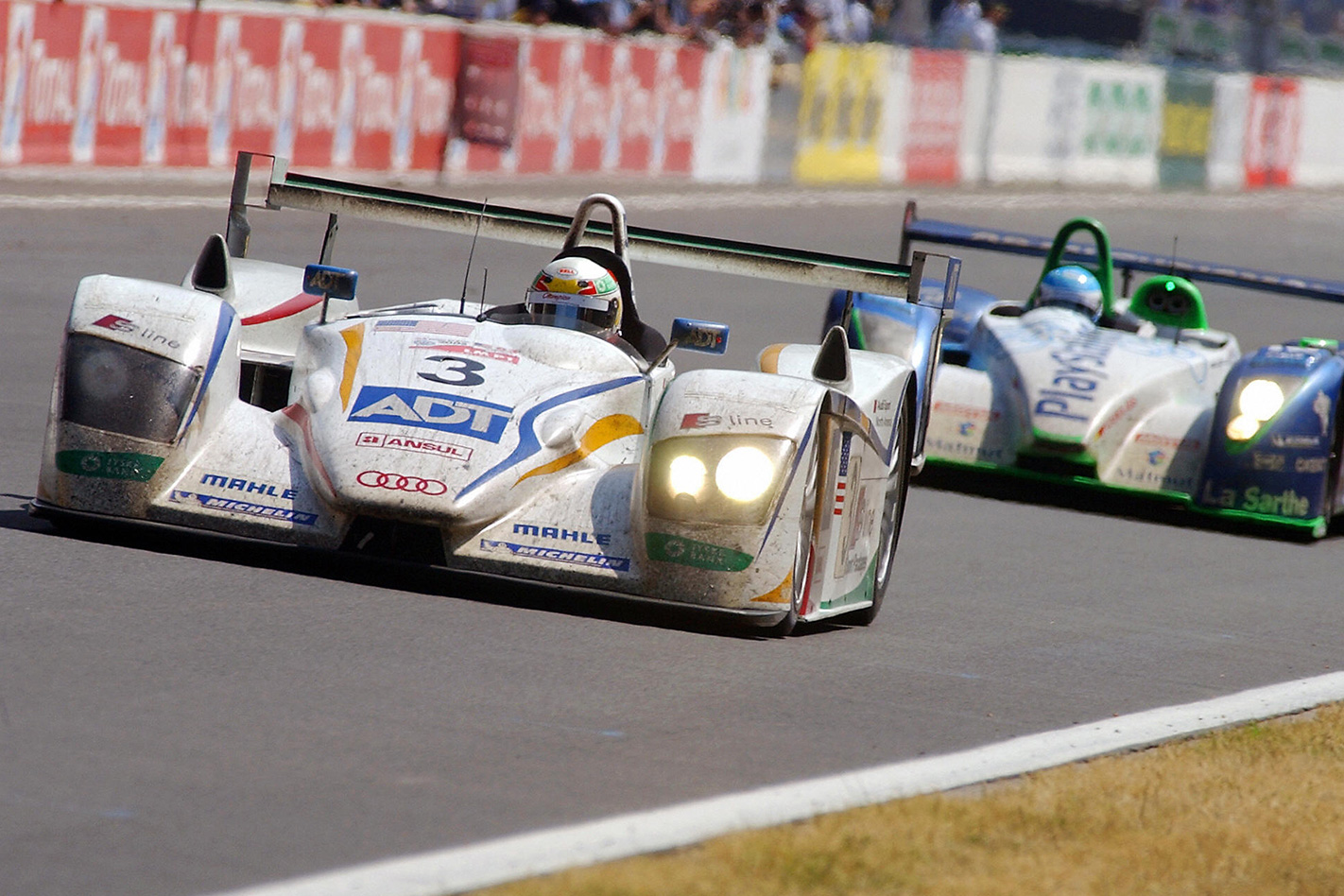
Not content with resting on his laurels, Baretzky insisted in fitting the engine with direct fuel injection for ’01, doing so with a condensed development period.
“I didn’t know how to do it, but I just said, ‘We have to do it’, and we somehow made it work.” He told Autosport.
It would be the first time Audi’s TFSI tech would be implemented on the track, resulting in significantly improved engine response, better fuel economy, and shorter fuel stops.
What followed was an absolute shellacking of the competition, as the R8 won in ’01 and ’02. Audi’s fuel-injection upgrade wasn’t revealed to the world until after the ’01 victory, with the entire project kept in complete secrecy. In fact, the engine remains shrouded with mystic, though there are some details available.
The 3.6-litre unit is constructed from lightweight aluminium, with a pair of Garrett turbocharges aiding power.
Official figures for Audi’s twin-turbo creation vary depending on the ruleset and which team was running the unit. From 2000-02 it was officially stated to produce 455kW, with smaller restrictors in 2003 and 2004 dropping that to 410kW, then 388kW in 2005.
Unofficially, the factory Joest Racing R8s were alleged to have around 500kW being sent to the wheels at speeds over 240km/h. This figure is measured at speed as the factory cars were fitted with ram-air intakes which benefited from the denser air being fed into the motor at higher speeds. Torque was reported to be in the region of 700Nm.
Audi’s of that era earned an enviable reputation for reliability, with no car fitted with the 3.6-litre V8 suffering an engine failure during a race.
This is in part thanks to the engine being fitted with two independent water pumps, along with a water-coiled oil radiator for the engine and gearbox which was integrated inside the engine’s V.
Along with reliability, the V8 was incredibly fuel efficient for a racing engine, able to achieve 12-13 lap stints on the 90-litre tank mandated by the rules. This is the equivalent of 166-180km at race pace, at a circuit which is attacked at wide open throttle for 71 percent of the lap.
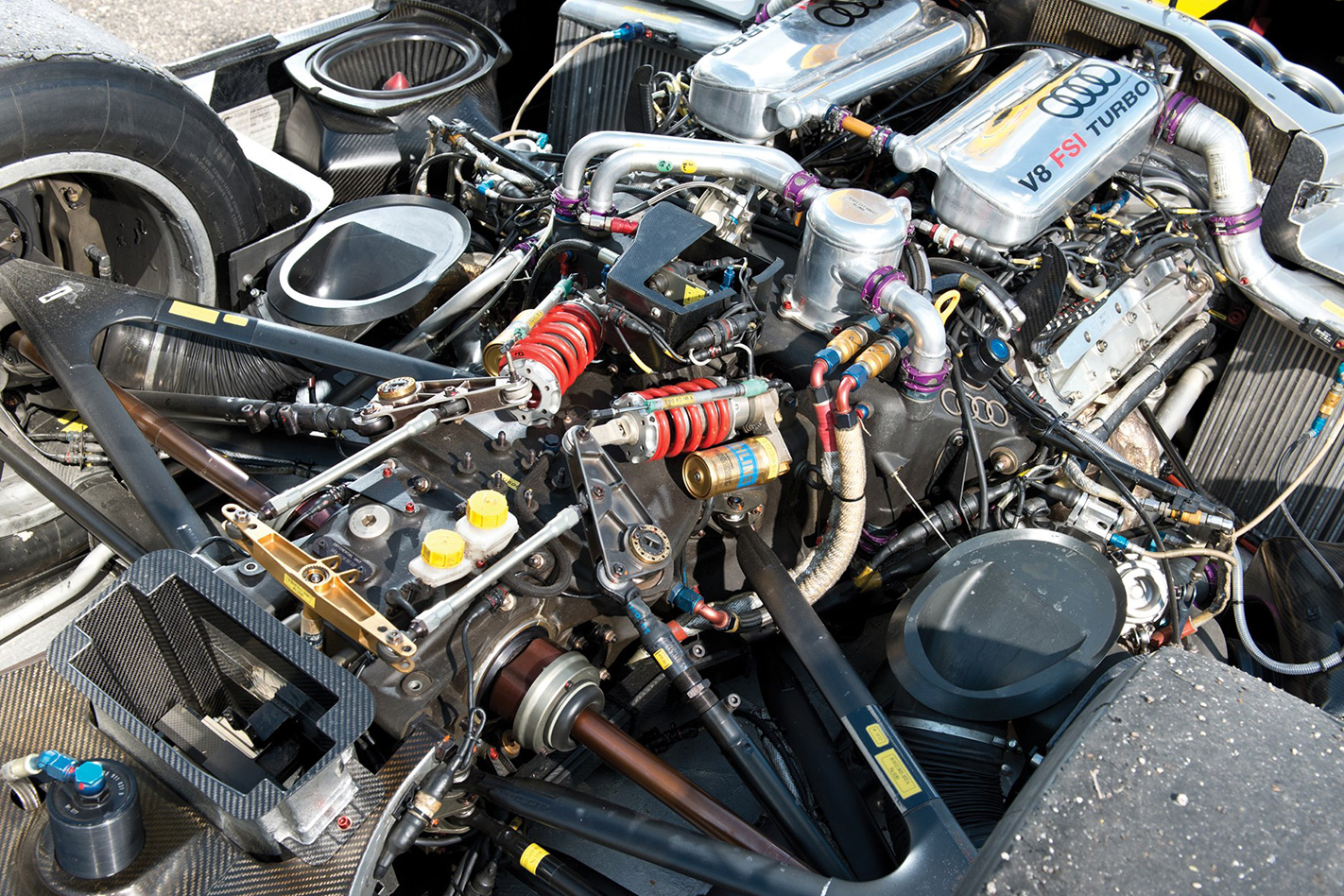
For 2001 the rules dictated 32.4mm air restrictors, with maximum boost pressures of 1.67 bar. The V8 had an 85mm bore and 79.22 stroke, and while the compression ratio was never disclosed, a paper written by Baretzky about its development states it is greater than 11.0:1. This high compression ratio was possible as TFSi injected the fuel at the exact time of ignition, reducing the chance of pre-ignition from over-compression. Importantly for pit stops, it meant a leaner mixture could be used.
The 3.6-litre V8 was more powerful, more reliable and more fuel efficient than its rivals, making it a powerhouse of early-2000s racing.
In 2003 Audi temporarily wound down its factory support for the R8, with funds being diverted toward VW Group stablemates Bentley, and its Speed 8 prototype which was built on the R8 chassis and powered by a modified 4.0-litre version of the 3.6-litre V8.
Once again, Baretzky’s creation would dominate, finishing 1-2 badged as a Bentley, with the original 3.6-litre in third and fourth.
The R8 would once again dominate in ’04, and ’05, making it an unbroken six-year winning streak for Audi’s twin-turbo V8. No other engine has won the 24 Hours of Le Mans as many times, let alone without being beaten.
As it was replaced by the diesel-powered R10, Audi’s petrol twin-turbo V8 has an unblemished, unbeaten, Le Mans record.
Audi dominated the 24 Hours of Le Mans from 2000 until 2014, only being beaten in the endurance classic twice during that time. The start of that domination came thanks to Baretzky, and his dreadnought of an engine.
| Manufacturer | Audi |
| Production | 1999-2006 |
| Configuration | 90u00b0 V8 twin-turbo |
| Bore x Stroke | 85 x 79.22 mm |
| Displacement | 3596cc |
| Valvetrain | DOHC four valves per cylinder |
| Power | 388-500kW |
| Torque | 700Nm |
Click here to read more Wheels features on Great V8s.


